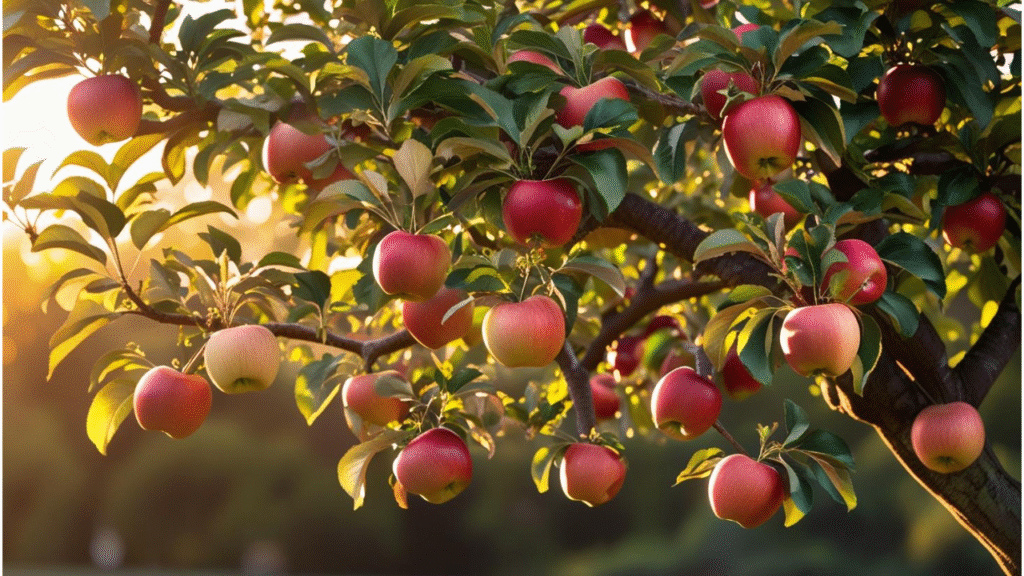
How to Grow and Care for a McIntosh Apple Tree: Expert Tips for a Bountiful Harvest
Have you ever dreamed of enjoying fresh, crisp McIntosh apples straight from your own backyard? 🍏 Whether you’re a seasoned gardener or just starting out, growing a McIntosh apple tree can be an incredibly rewarding experience. But like any fruit tree, it requires the right care and attention to thrive. If you’ve struggled with your tree not producing enough fruit, or if you’re unsure where to start, you’re not alone.
In this guide, we’ll walk you through everything you need to know to grow and care for your McIntosh apple tree—ensuring a bountiful harvest year after year. From choosing the perfect spot to pruning and protecting your tree from pests, we’ve got you covered. 🌱

Let’s get started on turning your McIntosh apple tree into a thriving, fruit-bearing wonder!
Table of Contents
Toggle🍏🌳 Why Choose a McIntosh Apple Tree? 🍎🌿
When it comes to growing apple trees 🌳, the McIntosh apple tree 🍏 is a favorite for many gardeners 🧑🌾, and for good reason! Let’s dive into why this tree 🌳 is the perfect addition to your garden 🏡.
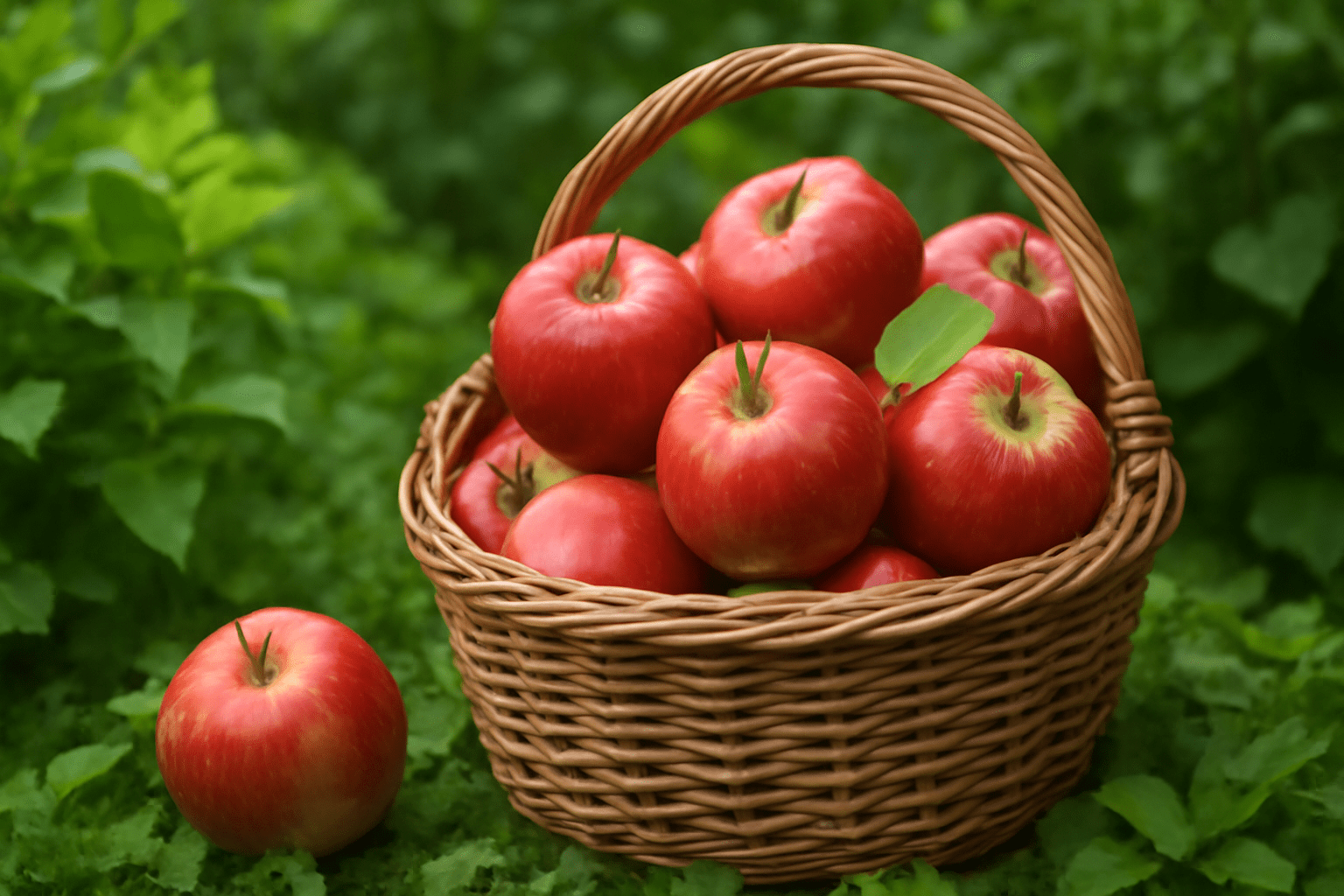
🍏 A Rich History and Unique Flavor 🍏
The McIntosh apple 🍏, originating in Canada 🇨🇦, has been a beloved variety ❤️ for centuries ⏳. Known for its tart-sweet flavor 🍬 and soft, juicy texture 🍎, McIntosh apples 🍏 are perfect for making pies 🥧, cider 🍹, and of course, enjoying fresh off the tree 🌳. Its unique flavor profile 🍏 makes it stand out among other apple varieties 🍎.
🌿 Perfect for Beginners 🌿
If you’re new to gardening 🧑🌾, the McIntosh apple tree 🌳 is a great starting point 🚀. These trees 🌳 are relatively easy to grow 🌱 and can thrive in a variety of climates 🌞❄️. Whether you have a small backyard 🏡 or a larger garden 🌳, they adapt well 🌿 and don’t require too much maintenance 🧑🌾 once established 🏠.
🍏 High Yield for Home Growers 🍏
McIntosh trees 🌳 are productive! A well-cared-for tree 🌳 will provide a generous harvest 🍏 of apples 🍎, making it ideal for home gardeners 🏡 who want a steady supply of fruit 🍏. It’s also a fantastic choice 🏅 for making homemade apple cider 🍹 or canning apples 🍏 for the winter months ❄️.
🌳 Great for a Variety of Uses 🌳
Besides fresh eating 🍏, McIntosh apples 🍏 excel in cooking 🍳. Their softness and flavor make them perfect for applesauce 🍏, apple butter 🍯, and, of course, pies 🥧. So, if you love baking 🍰 or cooking with apples 🍎, the McIntosh tree 🌳 is a must-have for your garden 🏡!
In short, the McIntosh apple tree 🍏 combines easy care 🧑🌾, delicious fruit 🍏, and high yields 🌳, making it an ideal choice 🌟 for any gardener 🌱.
🌞🍏 Choosing the Right Location for Your McIntosh Apple Tree 🍎🌳
The location of your McIntosh apple tree 🌳 is crucial 🔑 for its growth 🌱 and productivity 🍏. Let’s explore how to pick the best spot 📍 to ensure your tree 🌳 thrives! 🌿
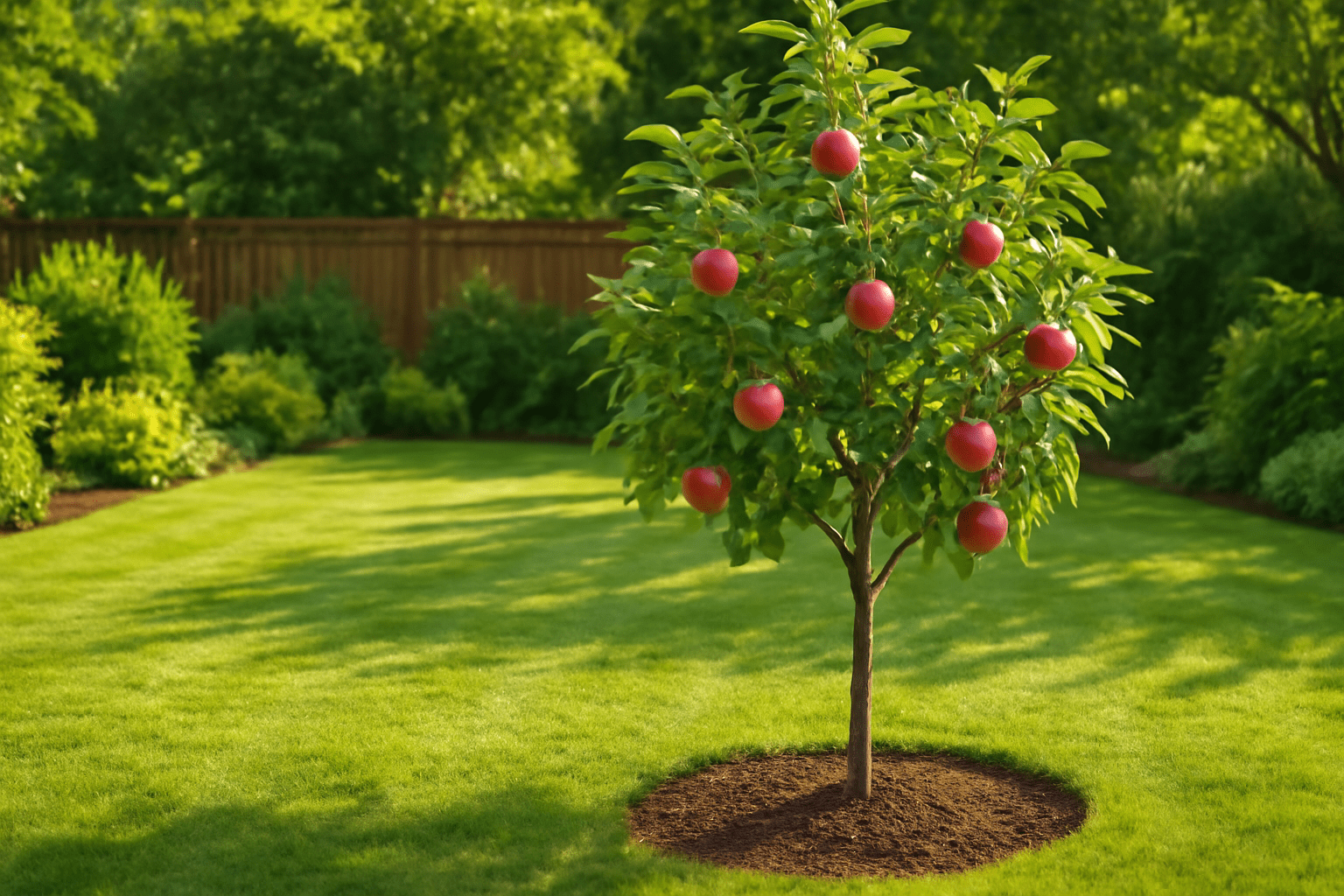
🌞 Full Sun is a Must 🌞
McIntosh apple trees 🌳 need plenty of sunlight 🌞 to grow strong 💪 and produce fruit 🍏. Ideally, plant your tree 🌳 in a spot 📍 where it will get 6–8 hours of direct sunlight ☀️ every day 🗓️. More sunlight 🌞 means better fruit 🍏 production, so pick a sunny area 🌞 that’s not shaded by other trees 🌳 or structures 🏠.
🌿 Well-Drained Soil 🌿
Apple trees 🌳 don’t like wet feet 💦! Choose a spot 📍 with well-drained soil 🌍 to prevent root rot 💀 and other issues 🔧. If your soil 🌍 is clay-heavy 🏞️ and tends to stay soggy 💧, consider planting your McIntosh tree 🌳 in a raised bed 🌱 or mounding the soil 🌍 to improve drainage 💧.
🌱 Soil pH and Quality 🌱
McIntosh apple trees 🌳 prefer slightly acidic soil 🌍, with a pH between 6.0 and 6.5 🔢. Before planting 🌱, you can test 🧪 your soil 🌍 using a pH testing kit 🧪. If your soil 🌍 is too alkaline 🔴, you can amend it with organic materials 🌱 or sulfur 💨 to bring the pH down 🔽 to the ideal range 🧪. Make sure the soil 🌍 is rich in organic matter 🍂, which helps retain moisture 💧 and provides essential nutrients 🧑🌾.
🌳 Space to Grow 🌳
McIntosh apple trees 🌳 can grow to about 12–15 feet tall 🌳 and wide 🌳 when fully mature. Ensure you have enough space 🏡 around the tree 🌳 for it to grow without crowding other plants 🌿 or structures 🏠. If you’re planting 🌱 multiple trees 🌳, space them 12–15 feet apart for standard varieties 🍏 and 8–10 feet for dwarf varieties 🌱.
🌬️ Protection from Wind 🌬️
While McIntosh trees 🌳 enjoy sunlight 🌞, they don’t thrive in strong winds 🌬️. Choose a location 📍 that’s somewhat protected from harsh winds 💨, especially during the flowering 🌸 and fruit-setting seasons 🍏. If needed, you can plant 🌱 a windbreak 🌳 (like a fence 🚧 or shrubs 🌿) to shield your tree 🌳 from the elements 🌬️.
🚜 Avoid Low-Lying Areas 🚜
Avoid planting 🌱 your McIntosh apple tree 🌳 in low-lying areas ⬇️ where cold air ❄️ may collect, as this can cause frost damage 🥶 to young trees 🌳 or blossoms 🌸. Ideally, plant 🌱 in a spot 📍 with good air circulation 🌬️ to help prevent diseases 🦠 and ensure your tree 🌳 gets a steady breeze 🌱.
By selecting the right location 📍—sunny 🌞, well-drained 💧, and spacious 🌿—you’ll set your McIntosh apple tree 🌳 up for a healthy 🌱, fruitful future 🍏! 🌟
🌱🍏 Planting Your McIntosh Apple Tree 🍎🌳
Planting your McIntosh apple tree 🌳 is an exciting step toward growing your own delicious fruit 🍏! Here’s a step-by-step guide 📝 to ensure your tree 🌳 gets off to a strong start 🚀. 🌟

🌿 When to Plant 🌿
The best time ⏰ to plant your McIntosh apple tree 🌳 is in early spring 🌷 or fall 🍁. These seasons 🌞❄️ offer cooler temperatures 🌡️ and adequate moisture 💧, giving your tree 🌳 the perfect environment 🌱 to establish its roots 🌿 before the warmer months 🌞. Avoid planting 🚫 during extreme summer heat 🌞 or frost 🥶 to prevent stress 😣.
🕳️ Preparing the Planting Hole 🕳️
A good start 🌱 begins with the right planting hole 🔲:
- Dig a hole 🔨 that is twice as wide as the root ball 🌍 but the same depth 📏. This ensures that the roots 🌱 can spread out easily and settle into the soil 🌍.
- Loosen the soil 🌱 at the bottom of the hole to allow for proper root penetration 🌳.
🍏 Planting Your Tree 🍏
- Remove the tree 🌳 from the pot 🏺 (if applicable) and gently shake off any excess soil 🌍 around the roots 🌱. If you’re planting a bare-root tree 🌳, soak the roots 🌱 in water 💧 for 2–3 hours ⏰ before planting 🌱.
- Position the tree 🌳 in the hole 🔲 so that the root flare 🌱 (where the roots meet the trunk 🌳) is level with the surrounding soil 🌍. This prevents the tree 🌳 from becoming buried too deep, which can cause rotting 🍂 or stress 😣.
- Backfill the hole 🌍 with soil 🌱, gently packing it down to eliminate air pockets ❌ but not compacting it too much. You want the soil 🌱 to be firm 🏋️♀️ but loose enough for the roots 🌱 to grow 🏡.
💧 Watering Right After Planting 💧
Once the tree 🌳 is in the ground 🌍, water 💧 it thoroughly 💦. This helps settle the soil 🌍 and provides much-needed moisture 💧 for the roots 🌱. Continue to water 💦 regularly during the first few months 🗓️, especially if rainfall 🌧️ is scarce.
🌱 Mulching for Protection 🌱
Apply a 2–3 inch layer of mulch 🍂 around the base of your McIntosh apple tree 🌳. This helps:
- Retain moisture 💧
- Keep the soil temperature stable 🌡️
- Suppress weeds 🌿 that can compete for nutrients 🌱
Make sure to keep the mulch 🍂 a few inches away from the trunk 🌳 to prevent rot 💧.
🌳 Staking Your Tree (If Necessary) 🌳
If you live in a windy area 🌬️ or your tree 🌳 is young and not yet stable 🏋️♂️, you might need to stake it for support 🤝. Use soft ties and a stake 🏗️ to gently secure the tree 🌳. Be sure not to tie it too tightly 🔒, as this could damage the trunk 🌳.
🌱 Watering and Maintenance After Planting 🌱
In the weeks following planting 🌱, keep the soil 🌍 consistently moist 💧 but not waterlogged 💦. This is especially important for the first 2–3 years 🌱, as your McIntosh apple tree 🌳 establishes itself. Gradually reduce watering 💦 as the tree 🌳 grows and becomes more established 🌿.
With these steps 📝, your McIntosh apple tree 🌳 will be well on its way 🚶♂️ to becoming a healthy 🌱, fruitful 🍏 part of your garden 🏡! 🌿
💧🍏 Watering and Fertilizing Your McIntosh Apple Tree 🍎🌿
Proper watering 💧 and fertilizing 🧑🌾 are key 🔑 to ensuring your McIntosh apple tree 🌳 grows strong 💪, healthy 🌱, and productive 🍏. Let’s go over everything you need to know 🧑🏫 to keep your tree 🌳 thriving! 🌱
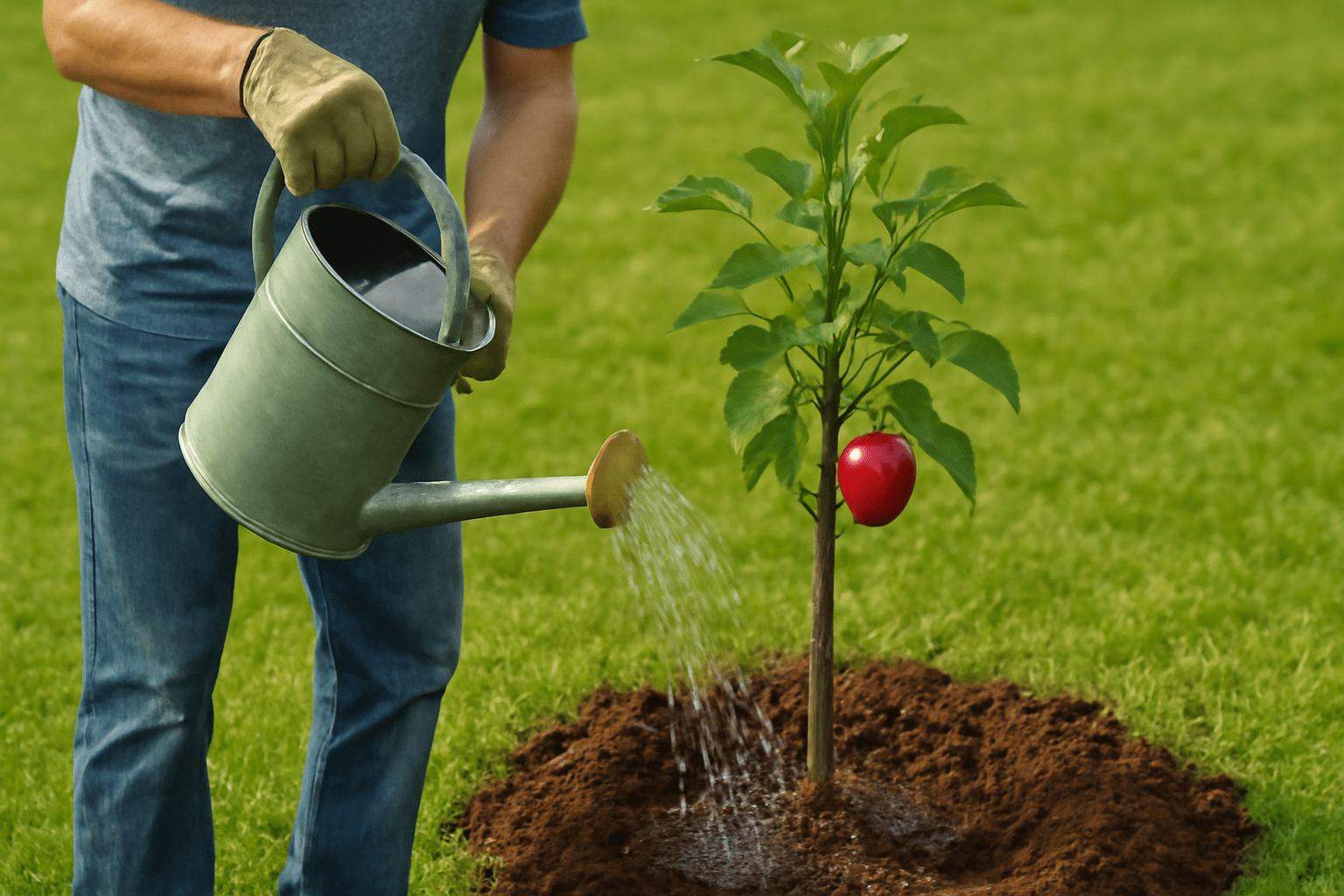
💧 Watering Your McIntosh Apple Tree 💧
Water 💧 is essential for your tree’s growth 🌱, but overwatering 💦 can be just as harmful as underwatering 🚱. Here’s how to get it right ✅:
- Young Trees 🌱: In the first few months after planting 🌱, water 💧 your McIntosh apple tree 🌳 deeply once a week, especially during dry spells ☀️. Ensure the soil 🌍 is moist but not soggy 💧.
- Mature Trees 🌳: Once established 🌱, McIntosh trees 🌳 need less frequent watering 💧. During dry periods ☀️, water 💧 every 2–3 weeks, giving the tree 🌳 enough moisture 💦 to penetrate deep into the soil 🌍. Aim for about 1 inch of water 💧 per week if rainfall 🌧️ is insufficient.
Signs of Overwatering 🚫:
- If you notice yellowing leaves 🍃 or the soil 🌍 around the tree 🌳 stays wet for long periods, you may be watering 💧 too much. Always ensure the soil 🌍 drains well and doesn’t stay soggy 🏞️.
Watering Tips 💧:
- Water 💧 at the base of the tree 🌳, avoiding wetting the leaves 🍃, which can encourage fungal diseases 🦠.
- Deep watering 💦 is better than frequent shallow watering 💧. Encourage deep root growth 🌱 by ensuring the water 💧 reaches below the surface 🌍.
- Water 💧 early in the day 🌅 to prevent fungal growth 🦠, which thrives in humid conditions 🌡️.
🌿 Fertilizing Your McIntosh Apple Tree 🌿
Proper fertilization 🧑🌾 helps your McIntosh apple tree 🌳 grow strong 💪 and produce a bountiful harvest 🍏. Here’s how to do it right ✅:
When to Fertilize 🧑🌾:
- In spring 🌷, just before the tree 🌳 starts to grow new leaves 🍃, is the ideal time ⏰ to apply your first round of fertilizer 🧪.
- Late fall 🍁 (after harvest 🍏) is a good time ⏰ for a second application to help the tree 🌳 prepare for winter ❄️.
Choosing the Right Fertilizer 🧪:
- Use a balanced ⚖️, slow-release fertilizer 🧑🌾 with equal amounts of nitrogen (N), phosphorus (P), and potassium (K), like 10-10-10. This provides a steady supply of nutrients 🌱 throughout the growing season 🌞.
- For organic options 🌱, you can use compost ♻️ or well-aged manure 🐄, which also helps improve soil structure 🌍.
How to Apply 🧑🌾:
- Broadcast the fertilizer evenly around the base of the tree 🌳, starting a few inches away from the trunk 🌳 and extending to the outermost branches 🌳.
- Water 💧 the fertilizer in well to help it soak into the soil 🌍 and reach the roots 🌱.
Signs of Nutrient Deficiency ⚠️:
- Yellowing leaves 🍃 or poor growth 🌱 may indicate a lack of nitrogen 🌿.
- Poor fruit set 🍏 or small fruit 🍏 might mean the tree 🌳 is lacking potassium or phosphorus 🧪.
🌿 Organic Alternatives and Mulching 🌿
If you prefer organic gardening practices 🌱, here are a few tips 🧑🌾:
- Compost Tea 🍂: Liquid compost ♻️ is an excellent organic fertilizer 🧪. Apply it every 2-4 weeks 🌱 during the growing season 🌞.
- Mulching 🍂: Organic mulches 🌿 like wood chips 🌲, straw 🌾, or leaf mold 🍁 provide nutrients as they break down 🔄. Mulch also retains moisture 💧 and keeps weeds at bay 🌱, benefiting both your tree 🌳 and the soil 🌍.
🚿 Avoid Over-Fertilizing 🚿
While it’s important to feed 🧑🌾 your tree 🌳, over-fertilizing 🧪 can be detrimental 🚫. Too much nitrogen 🌱 can lead to excessive leaf growth 🌿 with fewer fruits 🍏. Always follow the recommended application rates 🧑🌾 and avoid fertilizing too often 🗓️.
By following these watering 💧 and fertilizing 🧑🌾 tips 📝, you’ll ensure that your McIntosh apple tree 🌳 stays healthy 🌱, vibrant 🌿, and ready to produce a bountiful harvest 🍏! 🌳🍏
✂️🍏 Pruning and Training Your McIntosh Apple Tree 🍎🌳
Pruning ✂️ and training 🧑🌾 your McIntosh apple tree 🌳 are essential tasks that not only keep it looking neat but also help it grow stronger 💪 and produce better fruit 🍏. Let’s dive into the best practices for shaping and maintaining your tree 🌳! 🌿
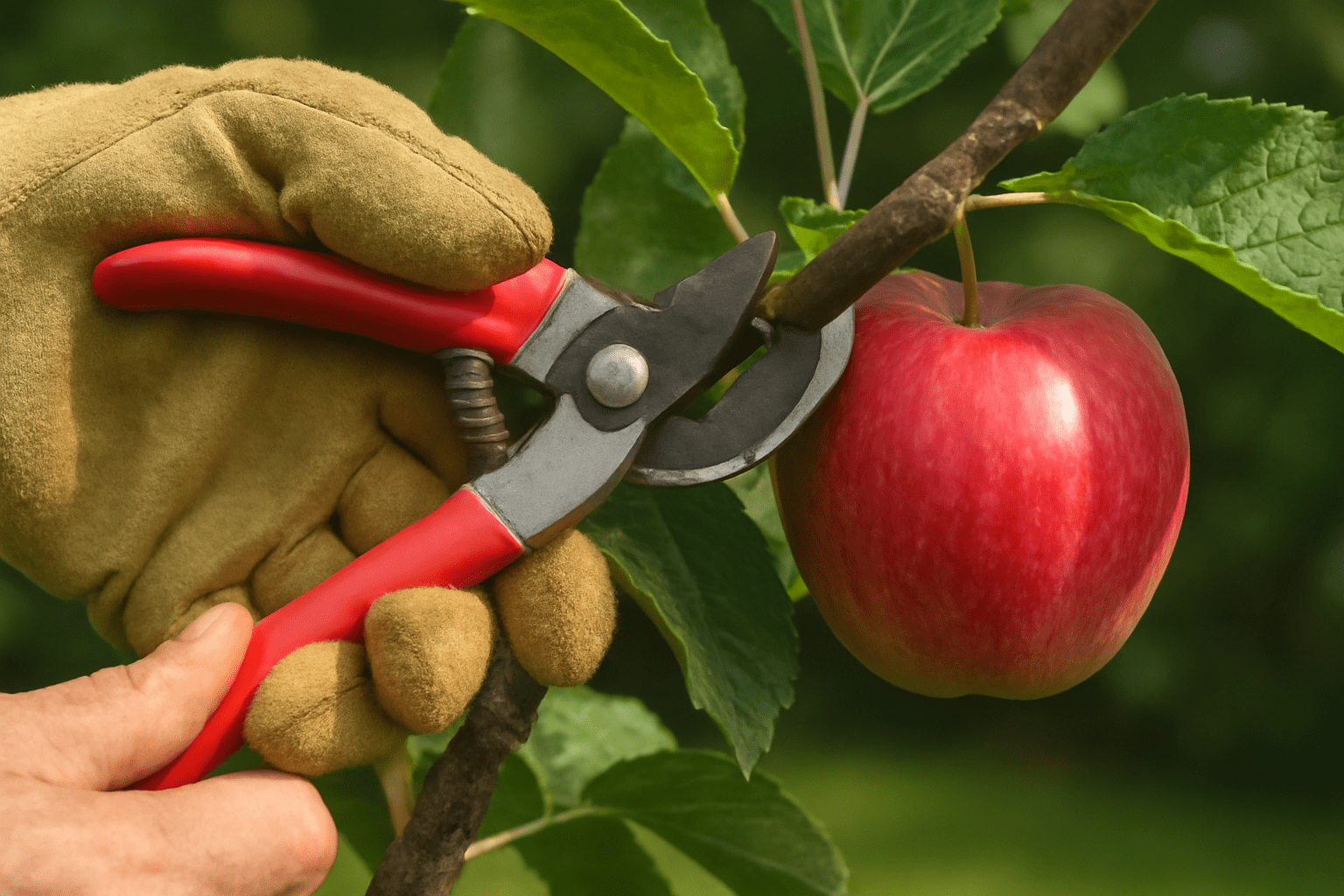
✂️ Why Pruning Is Important ✂️
Pruning ✂️ is vital for:
- Encouraging healthy growth 🌱: Removing dead or diseased wood 🍂 helps the tree 🌳 focus its energy ⚡️ on strong, healthy branches 🌿.
- Improving airflow and sunlight ☀️: Proper pruning ensures that sunlight 🌞 reaches all parts of the tree 🌳, which is crucial for fruit production 🍏.
- Increasing fruit yield 🍏: Regular pruning encourages more fruiting spurs 🌿, leading to a larger harvest 🏡.
🌿 When to Prune Your McIntosh Apple Tree 🌿
- Late Winter to Early Spring 🌷: The best time ⏰ to prune is while the tree 🌳 is still dormant (before the buds start to swell 🌱). This minimizes the risk of disease 🦠 and encourages strong new growth 🌱 in the spring 🌸.
- Summer Pruning 🌞: Light pruning during the growing season 🌱 can help manage tree size 🌳 and remove any suckers or water shoots 💦 (vigorous, fast-growing shoots 🌿 that don’t produce fruit 🍏).
✂️ How to Prune Your McIntosh Apple Tree ✂️
- Start with Dead, Diseased, or Damaged Wood 🍂: Cut away any dead, broken, or diseased branches first. This will help your tree 🌳 stay healthy and prevent the spread of diseases 🦠.
- Shape the Tree 🌳:
- Central Leader 🌱: For a traditional tree shape 🌳, maintain a single main trunk (central leader) with branches radiating outward 🌿. Remove any competing leaders to encourage a dominant central trunk 🌳.
- Open Center 🍏: Alternatively, you can prune the tree 🌳 to form an open-center shape 🏺, which allows sunlight 🌞 and air 🌬️ to reach the inner branches 🌿, improving fruit production 🍏. This involves removing the central trunk 🌳 and creating a vase-like shape 🍶.
- Thin Out the Branches 🌿: Remove small or crowded branches 🌱 to allow more space for the remaining branches 🌿. Aim to keep the tree 🌳’s structure open and airy, so light 🌞 can penetrate the interior 🌿.
- Remove any water shoots or suckers 🌱 growing from the base of the tree 🌳 or the trunk 🌳, as these do not produce fruit 🍏 and can drain the tree 🌳’s energy ⚡️.
- Cutting Back to Promote Fruit 🍏: Trim long, leggy branches 🌿 to encourage them to produce fruiting spurs 🍏 (short, stubby branches 🌱 that bear fruit 🍏). This helps your tree 🌳 focus on fruit production 🍏 rather than just growing tall 🌳.
🌳 Training Your McIntosh Apple Tree 🌳
Training your tree 🌳 helps manage its growth 🌱 and shape 🌿, leading to better yields 🍏 and easier maintenance 🧑🌾.
- Staking and Tying 🔗: When your tree 🌳 is young 🌱, you may need to stake it for support 🏗️ to keep it upright and encourage straight growth 🌿. Use soft ties 🧵 to avoid damaging the bark 🌳.
- Espalier Training (Optional) 🍏: If you have limited space 🏡 or want to create a decorative tree 🌳, you can train your McIntosh apple tree 🌳 using the espalier method—training the tree 🌳 to grow flat against a wall 🧱 or fence 🚪. This is a more advanced technique 🔧 but can be both functional and visually appealing 👀.
- Pruning to Size 🍏: Regular pruning ensures that your tree 🌳 doesn’t get too large and becomes difficult to manage ⚒️. For dwarf varieties 🌱, a light pruning once a year 🗓️ will help maintain their shape 🌳.
✂️ Key Pruning Tips ✂️:
- Always use sharp, clean pruning shears ✂️ to make clean cuts ✂️ that heal quickly 🩹.
- Make cuts at a 45-degree angle 🔼, slanting away from the bud 🌱 to prevent water 💧 from collecting on the cut ✂️.
- Avoid pruning too much in one go 🚫—gradual pruning over the years is better than trying to reshape your tree 🌳 all at once.
🌳 After Pruning Care 🌳
After pruning ✂️, give your McIntosh apple tree 🌳 extra attention 👀:
- Water 💧 thoroughly to help the tree 🌳 recover 🌱.
- Mulch 🍂 around the base to retain moisture 💧 and suppress weeds 🌿.
By properly pruning ✂️ and training 🧑🌾 your McIntosh apple tree 🌳, you’ll create a healthy 🌱, productive tree 🌳 that is easier to maintain 🧑🌾 and produces more delicious apples 🍏! 🌿
🌸🍏 Pollination: Do You Need Another Tree? 🍎🌳
When it comes to growing McIntosh apples 🍏, pollination 🌸 plays a key role in ensuring a good fruit harvest 🍏. But do you need another tree 🌳 to make this happen? Let’s break down everything you need to know 📝 about pollination for your McIntosh apple tree 🌳! 🌿
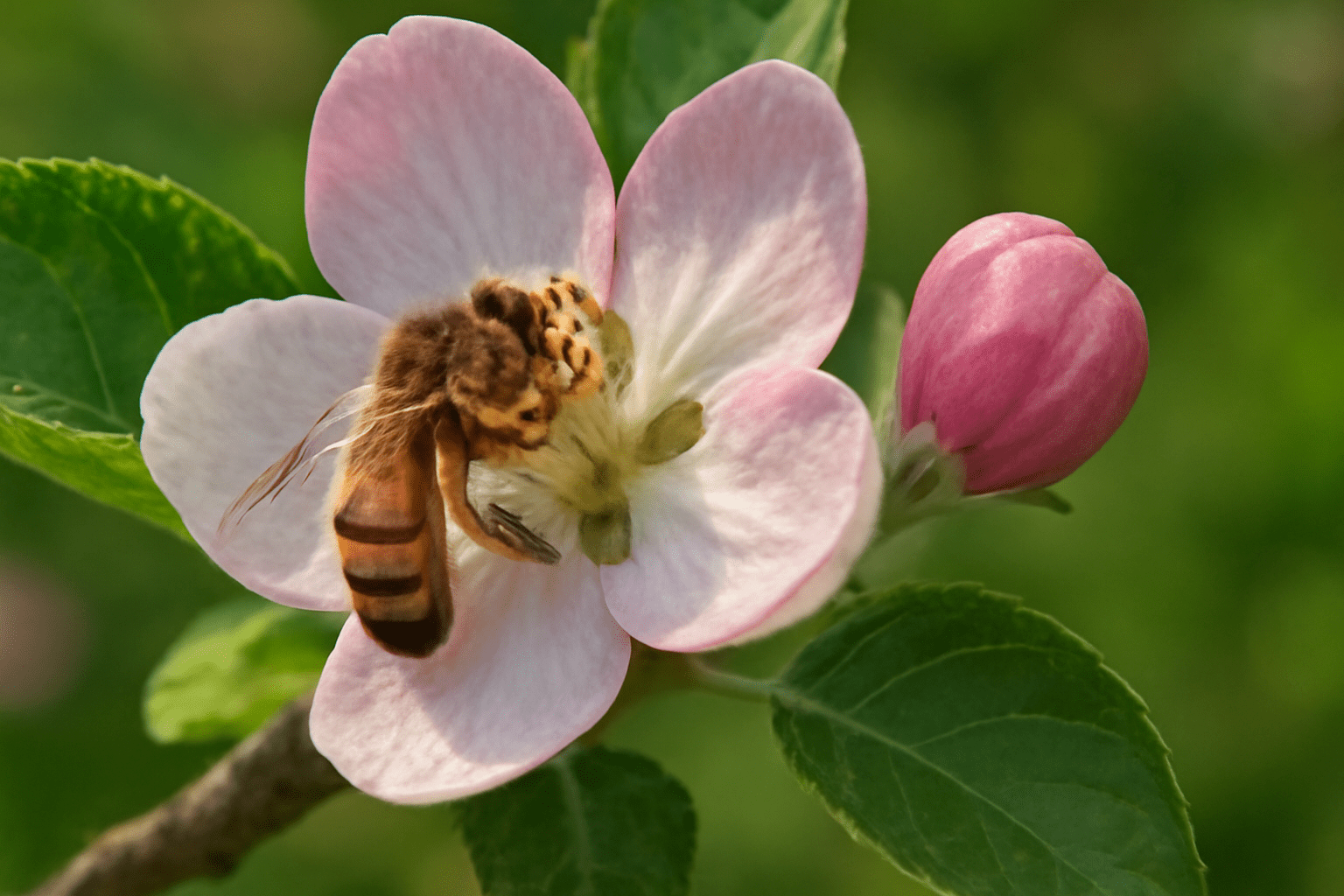
🌿 Why Pollination Matters 🌿
McIntosh apple trees 🌳 are not self-pollinating 🚫, meaning they require pollen 🌺 from another apple tree 🌳 of a different variety to produce fruit 🍏. This is crucial for a healthy and bountiful harvest 🍏. Without proper pollination 🌼, your tree 🌳 may produce little to no fruit 🍏.
🌸 Cross-Pollination Explained 🌸
Cross-pollination 🌸 occurs when pollen 🌺 from a different apple tree 🌳 variety is transferred to the flowers 🌸 of your McIntosh apple tree 🌳, usually by bees 🐝 or other pollinators 🦋. For this to happen, the trees 🌳 need to bloom at the same time 🕓, allowing the pollen 🌺 to travel between them.
🍏 Do You Need Another Tree? 🍏
Yes, you do need another apple tree 🌳 for proper pollination 🌸. Here are some tips 📝:
- Choose a Pollinator Tree 🌳: For the best results 🌟, select a different apple variety 🍏 that blooms around the same time ⏰ as your McIntosh tree 🌳. Some good pollination partners for McIntosh include:
- Honeycrisp 🍏
- Empire 🍏
- Gravenstein 🍏
- Jonathan 🍏
- Distance Between Trees 🌳🌳: To ensure effective pollination 🌸, plant the trees 🌳 no more than 50 feet apart 📏. Bees 🐝 typically don’t travel too far, so keeping the trees 🌳 within this range helps ensure that pollen 🌺 will be exchanged.
🐝 Attracting Pollinators 🐝
While the right tree 🌳 is important, the pollinators 🦋 themselves are just as crucial. Here’s how you can help attract bees 🐝 and other pollinators 🦋 to your garden 🌿:
- Plant Flowers 🌸: Flowers 🌷 like lavender, sunflowers 🌻, and clover 🌸 attract bees 🐝 and other pollinators 🦋 to your garden 🏡.
- Avoid Pesticides 🚫: Use organic pest control methods 🧑🌾 to avoid harming pollinators 🐝. Pesticides 💀 can reduce the number of bees 🐝 around your trees 🌳.
🌸 How to Maximize Pollination 🌸
- Plant Multiple Varieties 🌳🌳: Planting different apple varieties 🍏 that bloom at the same time 🕓 increases your chances of successful pollination 🌸. The more diversity 🌱, the better the pollination!
- Ensure Healthy Tree Growth 🌱: A healthy tree 🌳 is more likely to attract pollinators 🐝 and produce plenty of fruit 🍏. Follow good care practices 🧑🌾 such as proper watering 💧, pruning ✂️, and fertilizing 🧑🌾.
- Consider Planting More Than One Tree 🌳: If space 🏡 allows, planting multiple apple trees 🌳 not only helps with pollination 🌸 but also gives you a greater variety of apples 🍏!
🍏 Self-Pollinating Apple Varieties 🍏
While McIntosh apples 🍏 are not self-pollinating 🚫, you may be interested in other apple varieties 🍏 that are. If you want the convenience 🛠️ of growing apples 🍏 without another tree 🌳, look into self-pollinating varieties such as:
- Crabapple trees 🌳
- Granny Smith 🍏
- Fuji 🍏
However, even self-pollinating varieties 🍏 often produce better fruit 🍏 with a second tree 🌳 for cross-pollination 🌸.
By ensuring proper pollination 🌸, your McIntosh apple tree 🌳 will have the best chance of producing plentiful and healthy apples 🍏. 🌿🍏
🐞🍏Managing Pests and Diseases 🍎🌿
Keeping your McIntosh apple tree 🌳 healthy means staying vigilant 👀 about pests 🐜 and diseases 🦠. While these trees 🌳 are relatively hardy 💪, they can still face threats 🦠 from insects 🐞 and fungal infections 🦠. Here’s how to keep your tree 🌳 safe 🛡️ and thriving 🌿! 🌟
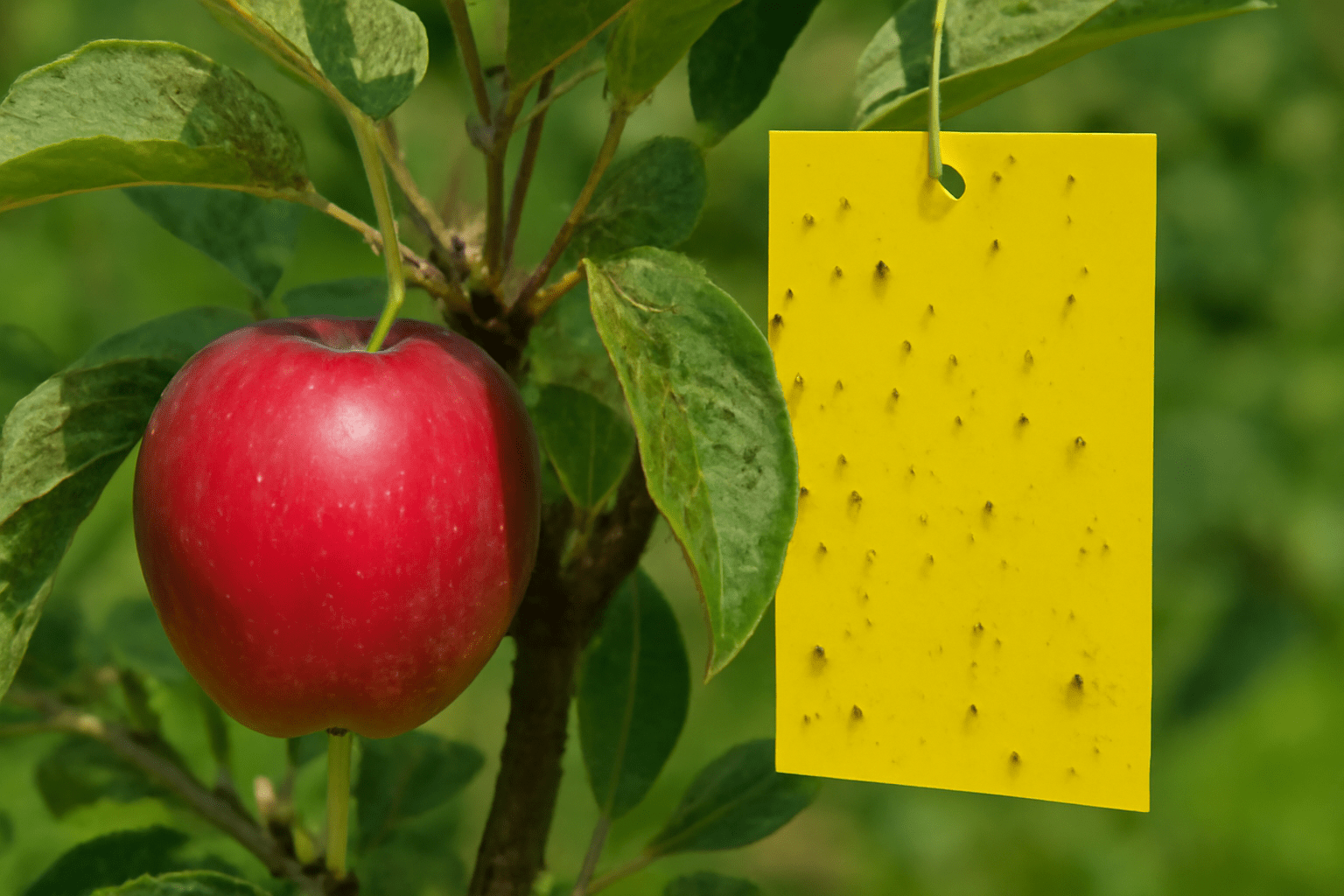
🌿 Common Pests and How to Handle Them 🌿
Several pests 🐜 can damage your McIntosh apple tree 🌳, but with the right strategies 💡, you can control them effectively.
Apple Maggot 🐛
- Signs of Damage 🍏: Small holes and tunnels inside the fruit 🍏.
- How to Manage 🛠️: Use yellow sticky traps 🟡 to attract and catch adult flies 🦟. Remove fallen fruit 🍏 to break the pest’s life cycle 🔄. You can also use organic insecticidal soap 🧴 on affected areas 🌱.
Codling Moth 🦋
- Signs of Damage 🍏: Worms 🐛 or larvae 🦠 inside the apples 🍏, causing them to rot 🦠.
- How to Manage 🛠️: Set up moth traps 🦋 to catch adult moths 🦋. Apply dormant oil 🛢️ in early spring 🌷 to kill larvae 🦠 before they infest the tree 🌳.
Aphids 🦗
- Signs of Damage 🍃: Curling, yellowing leaves 🍃 and sticky residue on branches 🌿.
- How to Manage 🛠️: Spray your tree 🌳 with water 💧 to knock aphids 🦗 off. For larger infestations, use neem oil 🌿 or insecticidal soap 🧴.
Japanese Beetles 🪲
- Signs of Damage 🍃: Holes in the leaves 🍃, leaving a skeleton-like appearance 🦗.
- How to Manage 🛠️: Hand-pick beetles 🪲 off the tree 🌳 in the early morning 🌅 when they are less active. You can also use row covers 🧑🌾 to protect young trees 🌳 or apply organic insecticides 🧴.
🌱 Common Diseases and How to Prevent Them 🌱
Fungal diseases 🍂 are one of the biggest threats to apple trees 🌳, but regular care 🧑🌾 and vigilance 👀 can prevent major issues 🦠.
Apple Scab 🍏
- Signs of Damage 🍃: Dark spots or lesions on leaves 🍃, fruit 🍏, and branches 🌳.
- How to Manage 🛠️: Prune affected leaves 🍃 and dispose of them 🗑️. Use fungicide sprays 🧴 during the growing season 🌞 to prevent infection, and ensure good air circulation 🌬️ around the tree 🌳 to reduce moisture buildup 💧.
Powdery Mildew 🌿
- Signs of Damage 🍃: White, powdery spots on the leaves 🍃, buds 🌸, and fruit 🍏.
- How to Manage 🛠️: Apply sulfur 🌿 or fungicidal soap 🧴 to control the spread. Prune dense areas 🌱 to increase airflow 🌬️, and remove infected leaves 🍃 and fruit 🍏.
Fire Blight 🔥
- Signs of Damage 🍂: Blackened, wilting leaves 🍃 and branches 🌳, often resembling scorch marks 🔥.
- How to Manage 🛠️: Prune affected branches 🌿 immediately and disinfect your pruning tools ✂️ between cuts ✂️. For severe cases 🚨, consider using a bactericide labeled for fire blight 🔥.
Rust 🍂
- Signs of Damage 🍃: Orange, rusty spots on leaves 🍃, with eventual leaf drop 🍂.
- How to Manage 🛠️: Prune infected branches 🌿, and apply fungicides 🧴 when necessary. Remove fallen leaves 🍃 to prevent re-infection 🔄.
🌿 Organic Pest and Disease Control Methods 🌿
For those who prefer natural solutions 🌱, there are several organic methods you can use to manage pests 🦠 and diseases 🦠:
- Neem Oil 🌿: Effective for controlling insects 🦗 like aphids 🦗, caterpillars 🐛, and mealybugs 🐞 while also treating fungal infections 🍄.
- Insecticidal Soap 🧴: A safe and effective option for dealing with soft-bodied pests 🦗 like aphids 🦗 and mites 🕷️.
- Diatomaceous Earth 🌱: Sprinkle around the base of the tree 🌳 to deter crawling insects 🐜 like ants 🐜 and slugs 🐌.
- Companion Plants 🌸: Planting marigolds 🌻, garlic 🧄, or chives 🌱 around your apple tree 🌳 can help repel insects 🐜 naturally.
🌿 Preventative Measures 🌿
Prevention is the best defense 🛡️ when it comes to pests 🐜 and diseases 🦠. Here are some steps to keep your McIntosh apple tree 🌳 healthy 🌱:
- Regularly Inspect Your Tree 👀: Check your tree 🌳 for pests 🐜 and diseases 🦠 every 1-2 weeks, especially during the growing season 🌞.
- Prune and Clean ✂️: Prune any dead, damaged, or diseased wood 🌿 to reduce the chances of infections 🦠 spreading. Remove fallen leaves 🍃 and fruit 🍏 regularly to prevent pest buildup 🐜.
- Maintain Tree Health 🌱: Healthy trees 🌳 are more resistant to pests 🐜 and diseases 🦠. Make sure your McIntosh apple tree 🌳 is properly watered 💧, fertilized 🧑🌾, and cared for 🧑🌾.
By staying proactive 🧑🌾 and using these pest 🦠 and disease 🦠 management strategies 💡, you can protect your McIntosh apple tree 🌳 and enjoy a bountiful, healthy harvest 🍏 year after year! 🌿🍏
🍏🌿 Harvesting Your McIntosh Apples 🍎🌳
The moment you’ve been waiting for has finally arrived 🎉—it’s time to harvest your McIntosh apples! 🍏 Knowing when and how to harvest ensures you get the best-tasting fruit 🍎 and a bountiful yield 🌿. Let’s walk through the process step by step! 🌟
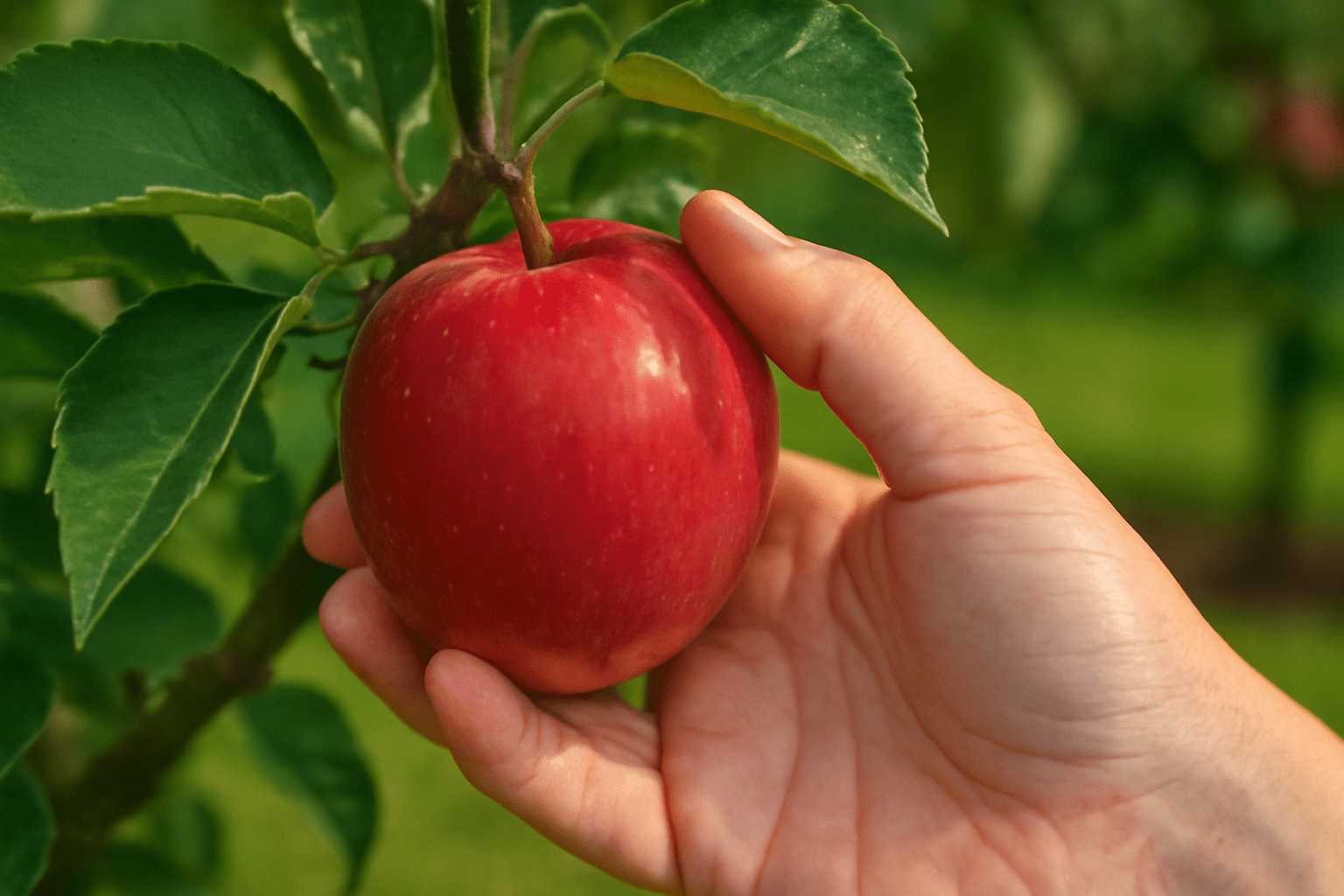
🌿 When to Harvest Your McIntosh Apples 🌿
McIntosh apples 🍏 are typically ready to harvest in late summer 🌞 to early fall 🍂, depending on your local climate 🌍. Here’s how to know when they’re perfect for picking 🍏:
- Color Change 🎨: McIntosh apples 🍏 turn from green to a deep red or pink 💖 when they’re ripe. Look for a bright, uniform color as a sign of maturity.
- Firmness 🤲: Gently squeeze an apple 🍏—ripe McIntosh apples 🍏 should feel slightly soft but still firm to the touch. They should give a little when pressed, but not be mushy 🍏.
- Taste Test 👅: The best way to tell if your apples 🍏 are ready is by tasting one 🍏. If it’s sweet, tart 🍋, and juicy 💧, then your apples 🍏 are ripe for harvesting! 🌿
- Separation from Tree 🌳: When you give the apple 🍏 a slight twist or lift, it should come off the branch 🌳 easily. If it resists, leave it for a few more days ⏳.
🌿 How to Harvest McIntosh Apples 🌿
McIntosh apples 🍏 are fragile 🍏, so handling them carefully is key to preventing bruising or damage 💥. Here’s how to pick them 🍏:
- Twist and Lift 🔄: Gently twist the apple 🍏 while lifting it upward to break the stem. Avoid pulling straight down to prevent breaking the stem or damaging the fruit 🍎.
- Use Two Hands 🤲🤲: If you’re reaching high branches 🌳, it’s helpful to use two hands—one to hold the apple 🍏 and the other to gently twist it free.
- Pick in the Morning 🌅: Harvest your apples 🍏 in the early morning 🌅 when they’re cool ❄️. This helps prevent bruising, as apples 🍏 can become softer when exposed to the heat of the day 🌞.
🌿 Storing Your McIntosh Apples 🌿
After harvesting 🍏, it’s important to store your McIntosh apples 🍏 properly to keep them fresh 🍎 for as long as possible:
- Sort and Clean 🧽: Before storing 🏠, gently sort the apples 🍏 by size and remove any that have bruises or damage 🩹. Clean them lightly with a dry cloth to remove dirt 🧼.
Storage Conditions 🌡️:
- Cool and Dry ❄️: Store your apples 🍏 in a cool, dry place 🏠—ideally in a basement or cellar 🏚️ with temperatures between 30–35°F (-1 to 2°C).
- Humidity 💧: Apples 🍏 last longer in high humidity environments (around 90%) 💧. You can store apples 🍏 in ventilated bins 🗑️ or crates 🥒 to maintain airflow 🌬️.
- Refrigeration 🧊: If you have a small batch 🍏, you can store McIntosh apples 🍏 in the fridge for up to a few weeks 🗓️. For longer storage 🕰️, place them in a crisper drawer 🍏 to maintain moisture 💦.
🌿 Post-Harvest Care: Enjoying Your Apples 🍏
McIntosh apples 🍏 are known for their sweet-tart flavor 🍎 and soft texture 🌸, making them perfect for:
- Fresh eating 🍽️
- Baking 🍰 (apple pies 🥧, crisps 🍏, and sauces 🍏)
- Making cider 🍻
If you have a large harvest 🍏, consider preserving them by canning 🥫, freezing ❄️, or making applesauce 🍏 to enjoy throughout the year 🗓️.
By following these tips 🌱, you’ll ensure that your McIntosh apples 🍏 are harvested at the perfect moment ⏰, and you’ll be able to enjoy them at their best 🍏! 🌟
⚠️🍏 Troubleshooting Common Problems 🍎🌿
Even with the best care, sometimes McIntosh apple trees can face issues. But don’t worry! Whether your tree isn’t producing as expected or you’re noticing unusual symptoms, we’ve got solutions to common problems that can arise. Let’s take a look at how to troubleshoot and get your tree back on track! 🌱
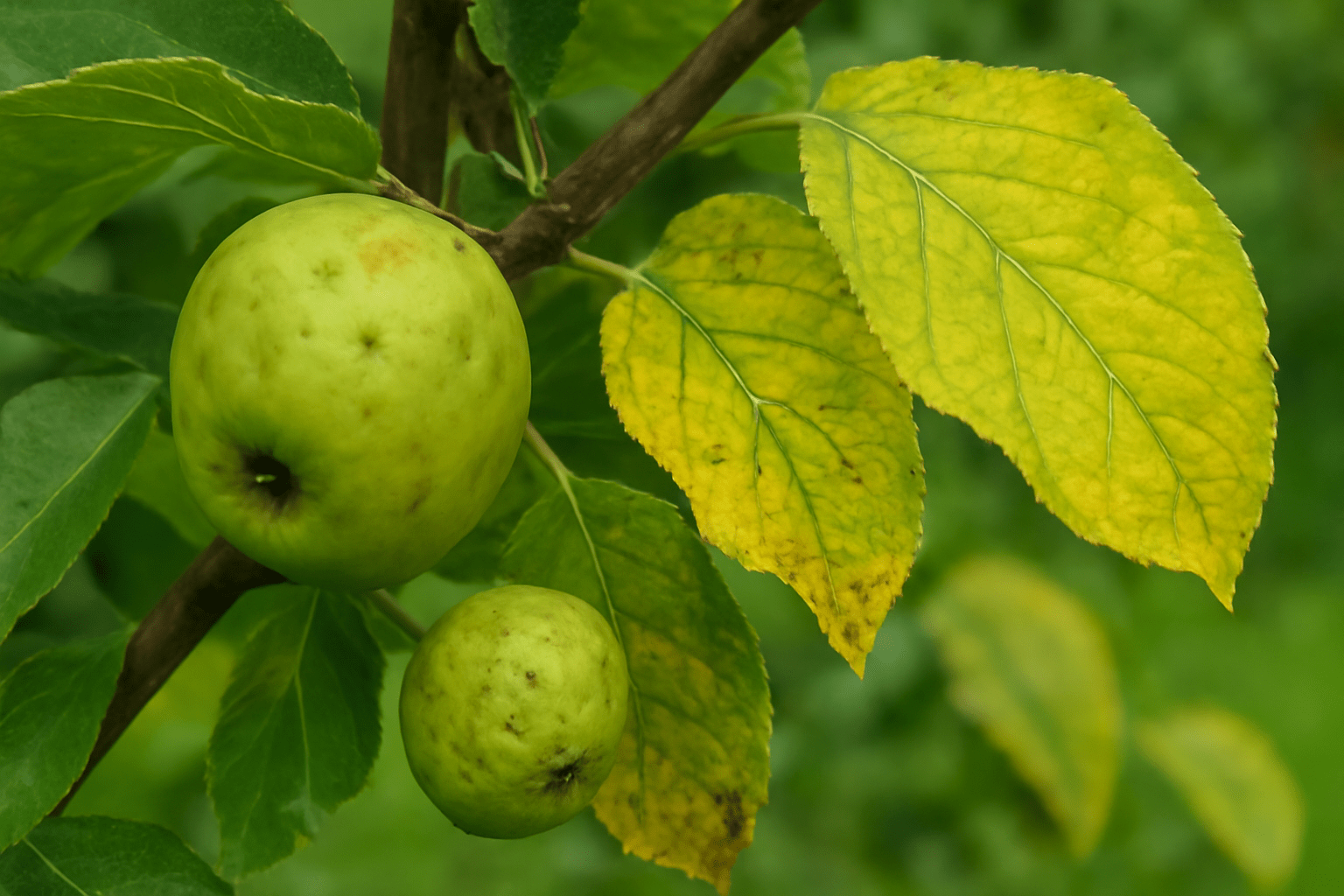
🌿 Why Are My Apples Falling Off the Tree? 🍏
It can be frustrating when apples fall prematurely, but this is a common issue. Here’s why it might happen and how to fix it:
- Natural Fruit Drop 🍏: Some early fruit drop is normal, especially if your tree is young 🌱. It’s a way for the tree to reduce its load and focus on the healthiest fruit 🍎.
Solution: Let your tree naturally thin the fruit. However, if it continues excessively, you may need to assess other factors. - Poor Pollination 🐝: If your McIntosh tree didn’t get enough cross-pollination 🌸, the fruit might drop prematurely.
Solution: Ensure you have a pollinator tree nearby (like Honeycrisp 🍯 or Empire 🍎). Check the blooming periods to make sure they overlap. - Water Stress 💧: Inconsistent watering, especially during dry spells, can lead to fruit drop 🍏.
Solution: Keep the soil consistently moist but not soggy 💦. Water deeply when necessary, especially in dry periods ☀️. - Nutrient Imbalance 🧑🌾: A lack of nutrients (especially potassium 🧪) can cause fruit to drop prematurely.
Solution: Apply a balanced fertilizer with slow-release nutrients 🌿, or use organic compost 🥬 to maintain healthy soil.
🌿 My Tree Is Not Growing Well—What Should I Do? 🌳
If your McIntosh apple tree isn’t growing as expected, here are some things to check:
- Insufficient Sunlight ☀️: McIntosh apple trees need 6–8 hours of direct sunlight 🌞 daily. Without enough sun, they may struggle to grow properly.
Solution: Ensure your tree is planted in a sunny spot and remove any obstacles blocking sunlight 🌿. - Poor Soil Quality 🌍: Heavy, clay-like soil or nutrient-deficient soil can limit growth.
Solution: Amend the soil with organic compost 🥕 or well-draining soil to improve structure and nutrient content 💧. Test the pH—McIntosh trees prefer slightly acidic soil (pH 6.0–6.5). - Watering Issues 💦: Both overwatering and underwatering can stunt growth.
Solution: Ensure your tree gets consistent water, but avoid soggy conditions 🏞️. Mulching around the base can help retain moisture 🌱. - Pests or Diseases 🐛: Pests or fungal infections might be damaging the tree’s growth.
Solution: Check for signs of pests (like aphids 🦗 or apple maggots 🐜) or diseases (like powdery mildew ❄️ or apple scab 🍏). Treat accordingly with organic pest control 🧴 or fungicides 🦠.
🌿 Why Are the Apples Small or Misshapen? 🍏
If your apples are coming out smaller or misshapen, there are a few potential causes:
- Lack of Pollination 🌸: Poor pollination can lead to undersized fruit or irregularly shaped apples 🍏.
Solution: Ensure that another apple variety (with overlapping bloom time 🌺) is nearby for pollination. - Overcrowding 🌱: If too many apples are left on the tree, they can become small due to competition for resources 🏞️.
Solution: Thin the fruit 🍏 when they’re small, leaving space for the remaining apples 🍎 to grow properly. - Nutrient Deficiency 🧑🌾: Insufficient nutrients, especially potassium 🧪 or nitrogen 🧬, can stunt fruit growth.
Solution: Fertilize with a balanced fertilizer and ensure the soil has enough organic matter 🌿 for healthy growth. - Environmental Stress 🌞: Extreme weather, like a late frost ❄️ or high temperatures 🌡️, can stress the tree and cause smaller or deformed fruit.
Solution: Protect your tree from late frosts by covering it with a frost cloth 🌨️ and ensure it’s adequately watered during hot spells 🔥.
🌿 Yellowing Leaves or Poor Tree Health—What Does It Mean? 🍃
Yellowing leaves or signs of poor health can signal issues with your McIntosh apple tree.
- Overwatering 💧: Excess moisture can lead to root rot 🌱, which causes yellow leaves.
Solution: Check for soggy soil 🌾 and ensure the tree is planted in a well-drained location 🌿. Avoid frequent shallow watering 🏞️. - Nutrient Deficiency 🍂: Yellow leaves may indicate a lack of nitrogen or other essential nutrients 🧑🌾.
Solution: Apply a balanced fertilizer that contains nitrogen, phosphorus, and potassium 🌱. - Pests or Disease 🐞: Aphids, scale insects, or fungal infections (like powdery mildew) can cause yellowing and poor health 🦠.
Solution: Inspect for pests 🐜 and treat with organic insecticidal soap 🧴 or fungicides 🍄.
🌿 My Tree Isn’t Producing Fruit—What Could Be Wrong? 🍏
If your McIntosh apple tree isn’t producing fruit, here’s what you can do:
- Age of the Tree 🌱: McIntosh apple trees take about 3–5 years to start bearing fruit 🍏.
Solution: If your tree is young 🌳, be patient—fruiting will come once the tree matures 🌱. - Poor Pollination 🌸: Without a pollinator nearby 🐝, your tree may not bear fruit.
Solution: Plant another apple variety nearby 🌳 with overlapping bloom times to ensure cross-pollination 🌸. - Improper Pruning ✂️: Over-pruning or improper pruning techniques can reduce fruit production 🍏.
Solution: Follow proper pruning methods 🧑🌾 to ensure the tree produces healthy fruiting spurs 🍏. - Too Much Fertilizer 🧪: Excessive nitrogen 🧬 can cause your tree to grow lush foliage 🌿 but no fruit 🍏.
Solution: Use a balanced fertilizer and avoid over-fertilizing 🌱.
By troubleshooting these common issues, you can keep your McIntosh apple tree in top shape 🌿 and ensure a healthy, productive tree 🍏 for many years to come! 🌱🍏
🌟🍏 Final Thoughts 🍎🌿
Growing and caring for a McIntosh apple tree is a rewarding journey that combines patience, attention, and a little know-how. By choosing the right location, planting correctly, providing consistent care, and managing potential problems, you’ll be well on your way to enjoying a bountiful harvest of sweet, juicy apples. 🍏✨

Remember, every tree is unique 🌳, and sometimes it takes a few seasons to see the full fruits of your labor 🍎. Stay patient, be proactive with your care, and don’t hesitate to address any issues as they arise 🌱. With the right attention, your McIntosh apple tree will thrive 🌟, producing delicious fruit for years to come! 🍏
Happy gardening 🌸, and here’s to your very own McIntosh apple harvest! 🍏🌳🌟
When is the best time to plant a McIntosh apple tree?
The best time to plant a McIntosh apple tree is in early spring or fall. These seasons offer cooler temperatures and more consistent moisture, giving your tree the ideal conditions to establish roots before the heat of summer or the cold of winter.
Do I need another apple tree to pollinate my McIntosh tree?
Yes, McIntosh apple trees are not self-pollinating. You’ll need another apple variety nearby for cross-pollination. Good pollinators for McIntosh include Honeycrisp, Empire, and Gravenstein.
How often should I water my McIntosh apple tree?
Young McIntosh trees need deep watering once a week, especially during dry spells. Once the tree is established, watering every 2–3 weeks during dry periods should be sufficient. Be careful not to overwater, as this can lead to root rot.
What type of soil is best for growing McIntosh apple trees?
McIntosh apple trees prefer well-drained, slightly acidic soil with a pH between 6.0 and 6.5. Adding organic compost can improve soil structure and provide essential nutrients for healthy growth.
How do I prune my McIntosh apple tree?
Prune your McIntosh apple tree in late winter or early spring while it’s still dormant. Focus on removing dead or diseased branches, thinning crowded areas to improve airflow, and shaping the tree to encourage strong, productive growth. Make clean cuts to avoid damaging the tree.
Why are my apples falling off the tree prematurely?
Premature apple drop can happen due to poor pollination, water stress, or nutrient imbalance. Ensure you have a pollinator tree nearby, water your tree consistently, and fertilize appropriately to help prevent this issue.
How can I prevent pests from damaging my McIntosh apple tree?
To manage pests like aphids, codling moths, and apple maggots, use organic pest control methods like neem oil or insecticidal soap. Also, keep the area around the tree clean and remove fallen fruit to break pest life cycles.
When are McIntosh apples ready to harvest?
McIntosh apples are typically ready to harvest in late summer to early fall. They should have a deep red color and a slightly soft texture. A taste test is the best way to determine if they’re ripe—if the flavor is sweet and tart, it’s time to pick!
